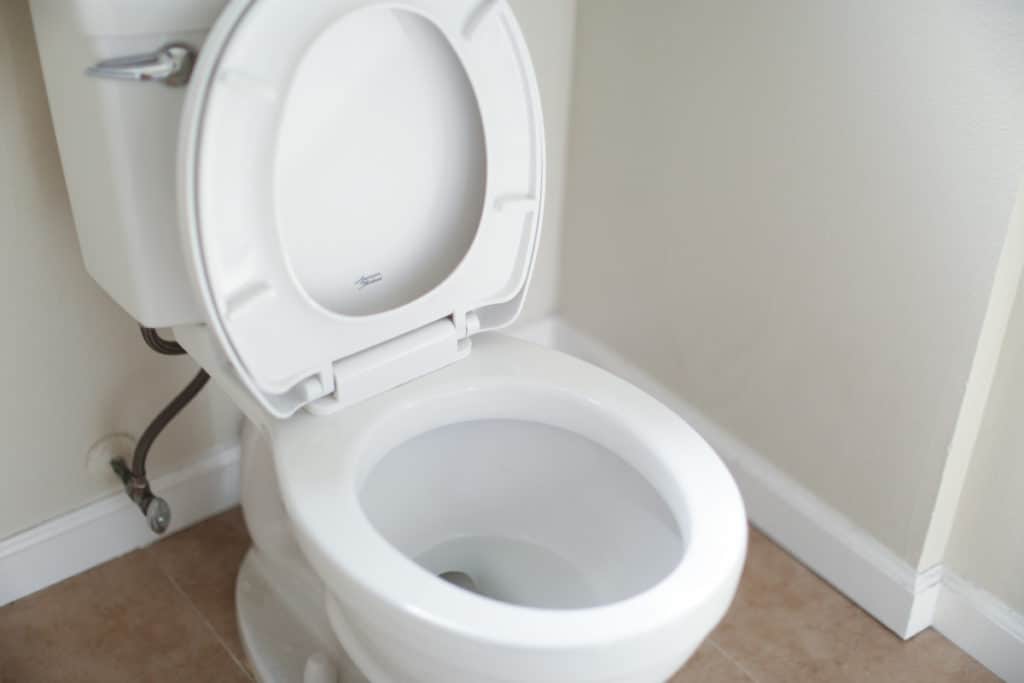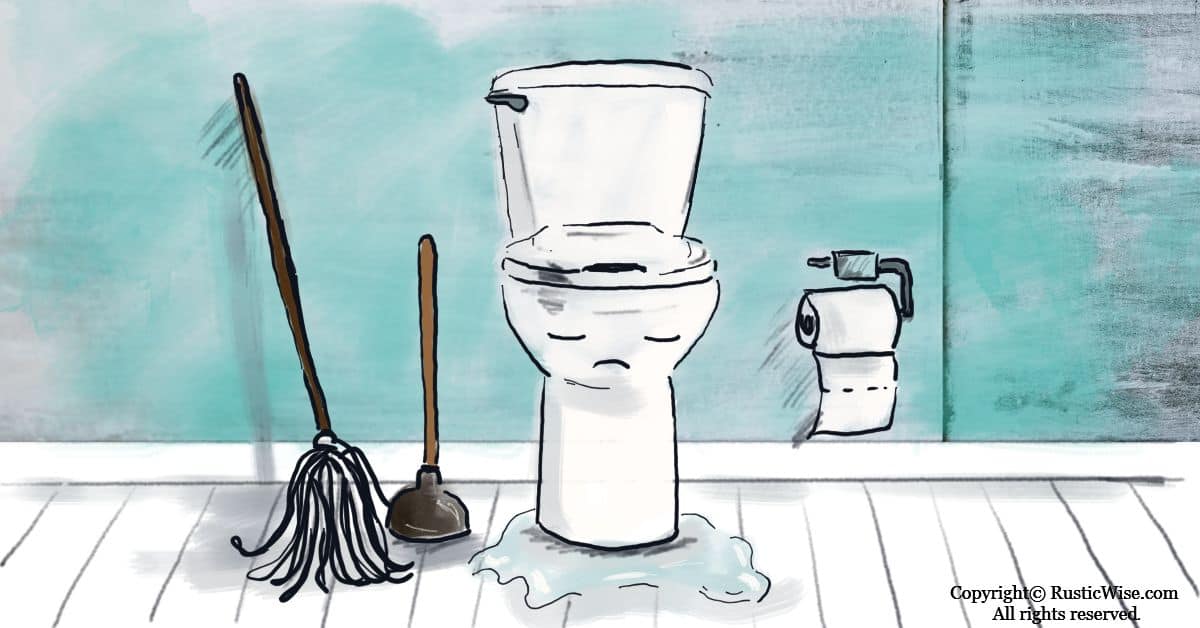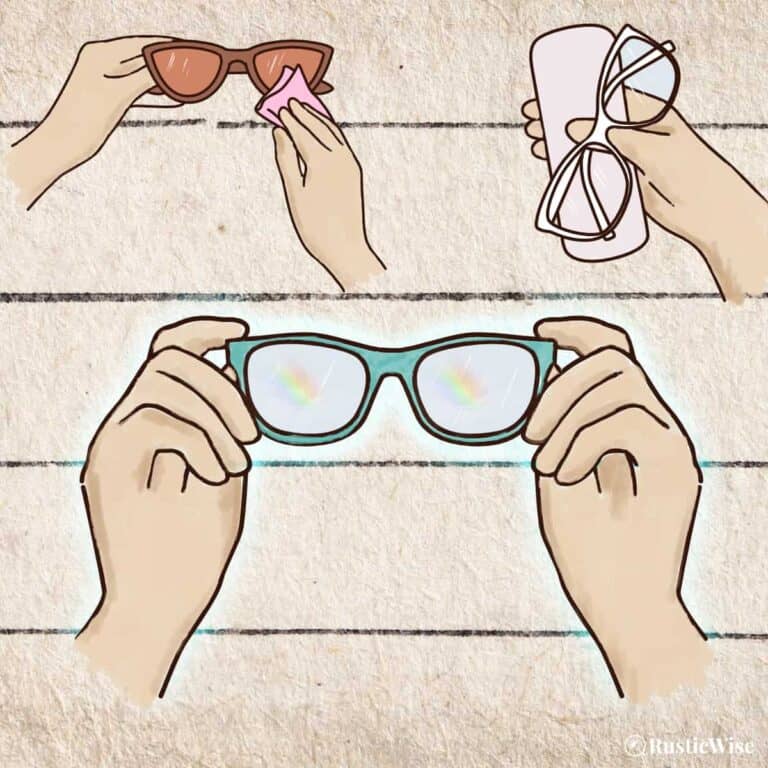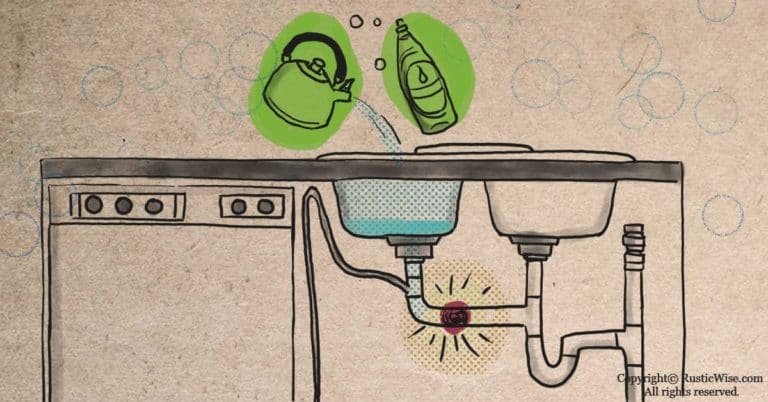Why Is There Water Coming From Under a Toilet and How To Fix It
Leaky toilet? A leaking toilet is annoying, but it’s important to repair it before it causes costly water damage to your flooring and possibly, sub-flooring, and worst-case scenario, to the ceiling below. There are a few reasons why there may be water coming from under a toilet (at the base). With a few tools and the following step-by-step instructions to get you started, this is a DIY project that you can do in a couple hours.
You may need a helping hand with some steps such as removing the toilet if needed. (A real friend is someone who’s willing to help you with your toilet!)
And if possible, try to avoid using the leaky toilet until it’s repaired. You may have noticed that the leaking water has a strong sewage-like odor. The water leaking from the toilet base is the same water that was sitting in the toilet bowl (which of course is unsanitary to say the least!).
Reasons why there is water coming from under a toilet
There are a few reasons why water is leaking from the toilet base.
One reason is that the toilet bolts securing the toilet to the floor may require tightening. This is an easy fix.
The other main reason for a leaky toilet base is that the wax seal is no longer working. It may be time to replace that old wax ring which involves removing the toilet. (We’ll show you how to do this step-by-step below.)
Other reasons for water pooling at the base of the toilet may indicate a problem elsewhere in the plumbing:¹
- A crack in the tank or bowl
- A leak between the base and tank (which has another seal, usually made of rubber or foam)
- A malfunctioning or loose supply tube
- A malfunctioning water shutoff valve
- Condensation from the toilet bowl (aka a “sweaty” bowl)
These other reasons for water pooling at the base require a different fix than outlined below.
Determine the location of the leak
Before diving right in, it’s important to determine the actual location of the leak. Grab a few old towels or rags to wipe up the water at the base of the toilet.
Often, water coming from under a toilet occurs after flushing. Go ahead and flush the toilet. Wait and observe the toilet base and the area around the toilet for signs of leaking for 10-15 minutes.²
Observe if there’s water leaking from the line behind the toilet. If water is leaking from the line, it’s an indication of a problem with the shutoff valve, water supply line or even the tank.
Check other parts of the toilet for leaking including the tank and bowl.
Note the timing of the leak
A leak coming from the tank or bowl is continuous. On the other hand, water coming from under a toilet occurs after flushing.
If you see water coming from under the toilet after flushing, you likely have a problem with the toilet bolts or wax ring.

Try tightening the bolts first
The easy fix is to first try tightening the toilet bolts.
You’ll need:
- A wrench or screwdriver (depending on whether your toilet has a screw or a nut and bolt)
- Either a putty knife or screwdriver to remove caps
- Old towels or rags
- Wipe up any water at the base of the toilet.
- Remove the plastic caps covering the bolts on the toilet base. You may need to use a putty knife or screwdriver to pry them off.
- Use a wrench or screwdriver to gradually tighten each bolt a little at a time. Tighten the first bolt a bit before moving on to the other bolt, alternating through each one, bit by bit. It’s important not to tighten the bolts too much at a time or risk cracking the base of the toilet.
- Flush the toilet to test if there’s still water coming from under the toilet.
If there’s still water pooling at the base, the next fix you can do is to replace the wax ring by removing the toilet.
Tip: Do your base bolts spin loosely when you attempt to tighten them? You’ll need to replace them with new bolts.
How to replace the wax ring on a toilet: step-by-step
The purpose of the wax ring (also called the wax gasket) is to provide a water-tight seal at the base of the toilet. An old wax ring is likely the source of your toilet issues.
Don’t worry. A wax ring is inexpensive and can be found in any hardware or home improvement store.³ Set aside a couple of hours for this project and enlist the help of a friend to help remove the toilet.
You’ll need:
- New wax ring
- New toilet washers and bolts (if needed)
- Old towels, rags or a mop
- Plunger or disposable cup to scoop out water as needed
- A wrench or screwdriver (depending on whether your toilet has a screw or a nut and bolt)
- Piece of cardboard to place toilet and protect flooring
- Scraper or putty knife to remove old wax ring
- Rubber gloves
- Turn off the water shutoff valve by cranking the handle clockwise until it’s facing down). This is usually directly behind the toilet (in older homes, the shutoff valve may be in the basement).
- Remove the tank lid. Flush the toilet by holding down the handle to drain as much water as possible. This ensures you have an empty tank.
- Use a plunger to remove excess water. If you don’t have a plunger, use a disposable cup to scoop out any water from the toilet bowl. Wipe up any remaining water with an old rag, towel, or mop.
- Disconnect the water supply line at the back of the toilet. Use a wrench to loosen the nut. The toilet should slide out easily.
- Use a wrench or screwdriver to pry off the plastic covers on the base of the toilet. Loosen and remove the base bolts securing the toilet. With the help of a friend, lift the toilet up by the bowl (not the tank) and place it aside on top of the piece of cardboard. A back-and-forth motion helps to ease the toilet from the old wax gasket.
- Stuff an old rag in the exposed sewer pipe to prevent fumes from entering your bathroom.
- Use a scraper or putty knife to remove the old wax ring. Be careful not to damage the closet flange while scraping. The flange is typically a black ABS plastic ring that’s secured to the floor and connects to the drain pipe. It’s important to thoroughly clean the area and scrape off all the old wax gasket bits to ensure a proper seal with the new wax ring.
- Place the new wax ring down. Make sure it’s positioned correctly at the center of the closet flange. Press down gently.
- Place the tee bolts in the proper slots on the side of the flange.
- Remove the old rag from the sewer pipe and discard.
- Carefully reinstall the toilet. Line up the holes on the base of the toilet with the tee bolts and gently place down. Press down on the toilet to create a tight, waterproof seal on the new wax ring.
- Replace or reinstall the toilet washer and nuts. Ensure you don’t overtighten. Place the plastic caps back on.
- Reconnect the water supply tube and turn the water valve back on.
Tip: If the wax ring is not making much contact between the porcelain and the flange, you can try stacking two wax rings together. Be sure they are wax only—not the kind with an attached mini flange.
You’re done!
What to do after replacing your toilet wax ring
Once you’ve successfully installed a new wax ring, you’ll want to do a thorough job of cleaning and disinfecting the area around the toilet.
Try flushing the toilet again to check for leaks. Hopefully you have solved the problem. Check the toilet for a few days to check for any signs of water leaking.
If you decide to caulk the area around the base of the toilet, make sure you use a quality caulk made for tubs and bathroom purposes.
👉 Interested in learning more Timeless Skills? See our Collection of Timeless Skills. ✨
Would you like more timeless tips via email?
Fun tips to help you live an independent, self-sustaining lifestyle. Opt-out at any time.


References
- Henkenius, Merle. “How to Fix a Leaking Toilet“, This Old House. Accessed December 2020.
- Mr. Rooter (February 2023). “Why is My Toilet Leaking at the Base?” Mr. Rooter Plumbing. Accessed November 2023.
- Home Depot, How to Fix a Leaking Toilet Base, https://www.homedepot.com/c/ah/how-to-fix-a-leaking-toilet-base/9ba683603be9fa5395fab909e5b69f5. Accessed December 2020.

Author: Josh Tesolin
Josh is co-founder of RusticWise. When he’s not tinkering in the garden, or fixing something around the house, you can find him working on a vast array of random side projects.









